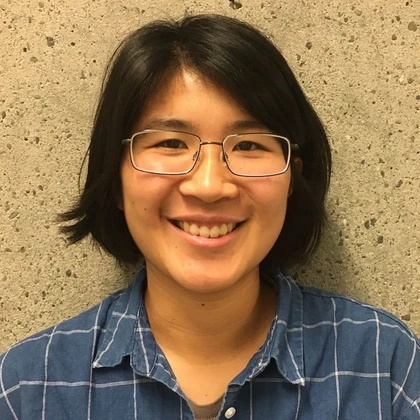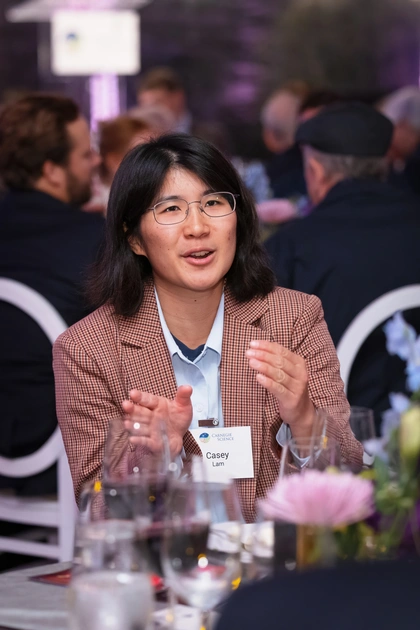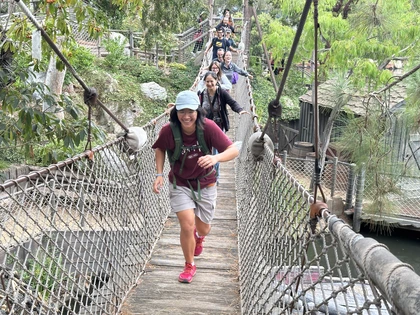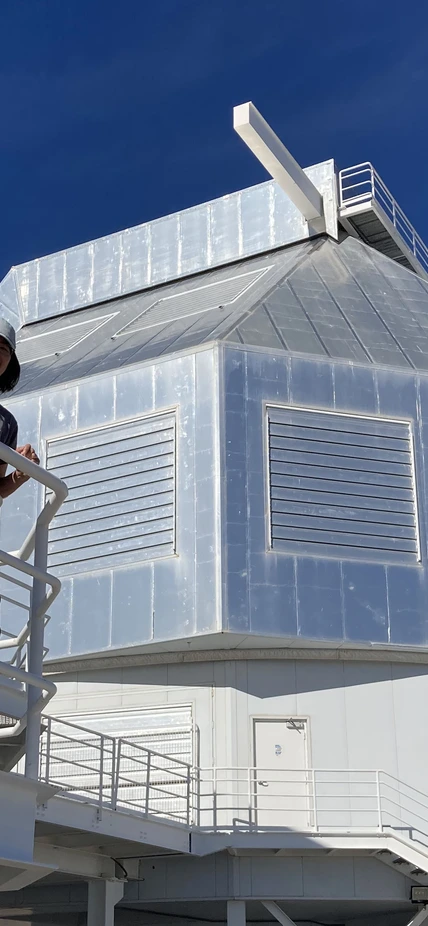
Q: What is your general field of study?
I’m an observational astronomer, which means I use telescopes to gather data and study the sky. My specific focus is on stellar-mass black holes, which are between 5 and 100 times the mass of our Sun. They form when massive stars collapse at the end of their life cycles. Black holes, by definition, don't emit light, so we can only observe them indirectly. For example, some stellar-mass black holes exist in binary systems with a visible companion star, and we can detect those black holes and measure their masses by observing and characterizing the orbits of the visible stars. We’re only able to detect the black holes indirectly by studying the behavior and orbital characteristics of their companion stars. We’re only able to detect the black holes indirectly by studying the behavior and orbital characteristics of their companion stars. Ultimately, my goal is to better understand how many of these black holes exist in our galaxy and how their masses are distributed.
Q: Did you always think you would be a scientist?
In elementary school, I was interested in a lot of different things, like biology, chemistry, and math. In junior high school, I read a lot of popular science books, like Stephen Hawking’s A Brief History of Time and The Golden Ratio: The Story of Phi, the World's Most Astonishing Number by Mario Livio. I found out much later, when I was studying astronomy, that Livio was a renowned astrophysicist and astronomer. A lot of people use the word “beautiful” to describe math, and I really understand that—I love numbers. Eventually, though, I discovered that pure math is more about writing proofs using words and symbols, and the numbers mostly go away. So I landed on studying physics in college. It wasn’t until graduate school that I took astrophysics classes, used telescopes, and became an observational astronomer.
Q: Was your love of science shaped by a particular experience or mentor?
I had a couple of teachers in high school who sparked my initial interest in math. In undergrad, my first experiences doing research were really pivotal. I loved that in research, there’s no answer at the back of the book—you’re working to create the answers yourself and generate new knowledge. It was a really fun job because I got paid to learn and uncover new information.
Q: What is the coolest thing you’ve worked on so far in your career?
In graduate school, my Ph.D. advisor and I discovered the first isolated stellar-mass black hole. Up until that point, all identified stellar-mass black holes were paired with something else—either orbiting a star or even another black hole. We estimate that there are approximately 100 million stellar-mass black holes in the Milky Way galaxy, most of which we expect to be isolated. However, even though they make up the majority of black holes in our galaxy, their lack of interaction with a companion object makes them much more difficult to identify.
To detect the first isolated stellar-mass black hole, we used a technique called gravitational microlensing, in which the black hole acts as a lens when it passes in front of a distant star. The black hole’s gravity bends the star’s light, which makes it temporarily brighten and change its apparent position. By tracking these shifts and analyzing the star’s motion, we were the first to pinpoint this rogue black hole and calculate its mass and velocity.

Q: What do you think is the most exciting research direction happening in your field right now and what future development do you think will have the greatest impact on your field?
There’s a European space mission called Gaia that has been collecting data for the past 10 years (it recently concluded in January) and has been releasing its findings through periodic data releases. At the end of 2026, they will have their fourth data release, which is highly anticipated. This is an astrometric mission that provides precise measurements of stellar positions. It will be the largest astrophysical data set ever published at the time, containing data from the mission’s first 5+ years. What makes this data particularly exciting for me is that these measurements will allow us to search for and discover more stellar-mass black holes.
Additionally, in October 2026, NASA is launching a flagship mission called the Nancy Grace Roman Space Telescope. The Roman Space Telescope will perform a survey of the central bulge of the Milky Way Galaxy to track brightness changes in hundreds of millions of stars, which will uncover many black holes with microlensing.
Q: What are some of the challenges you have encountered so far in your career and how did you address them?
I’d say the most challenging aspect of being a scientist is navigating internal politics within a team or a discipline and dealing with different—often very strong—personalities and competing agendas. I turn to more senior scientists for perspective and advice on how to handle situations where I feel out of my depth.
Q: What advice would you give to graduate students and others who are just starting their scientific careers?
There are a lot of different paths you can take as a scientist, across many disciplines. My advice would be to stay open to new experiences and try everything once. You might discover a passion for something you never expected. Conversely, you might pursue a path you thought you’d love, only to find it doesn’t resonate with you. I discovered early on that I didn’t enjoy traditional lab work, which led me to pursue astronomy instead. Some scientists thrive in solo research, while others find fulfillment in teaching or mentoring. You won’t know what feels right until you try a variety of things.

Q: Why did you decide to do a postdoctoral position at Carnegie and what has your experience at Carnegie meant to you?
Universities have a teaching and education mission in addition to research, so graduate students generally get much more attention and resources than postdocs. But at Carnegie, postdocs are at the center of everything. On top of that, it has a robust postdoc community—unlike many universities, where there may only be one or two people in your area. Even though we all work on different topics, we cross-pollinate, share research, and learn from each other. It’s an incredibly collaborative and supportive environment. Another major advantage Carnegie offers is access to the Magellan Telescopes. Having time on these world-class facilities is incredibly important for developing as an astronomer.
